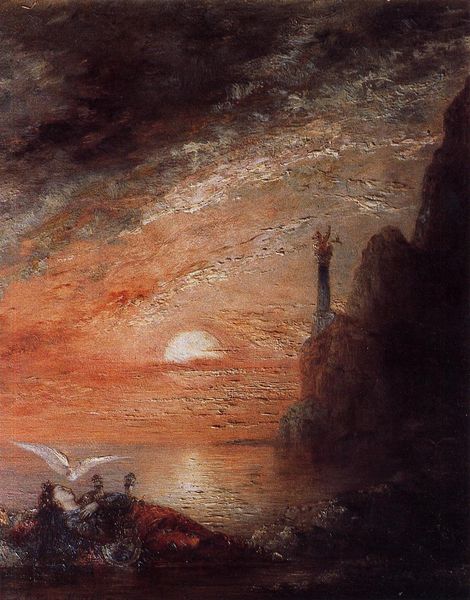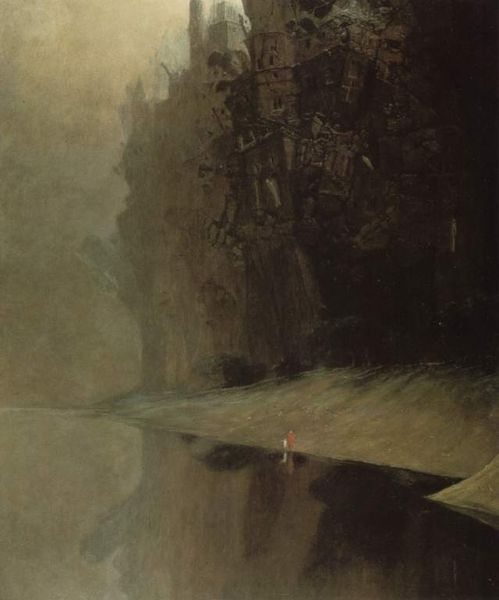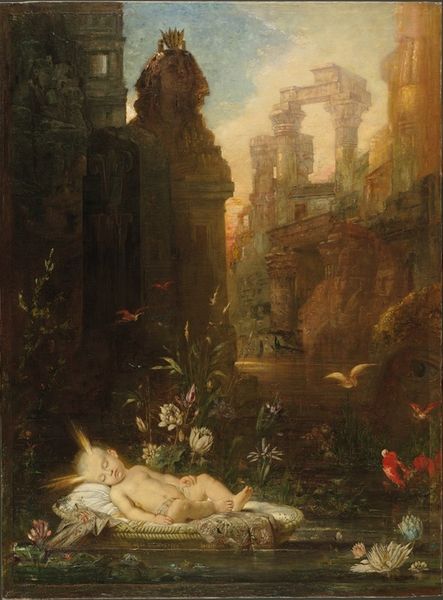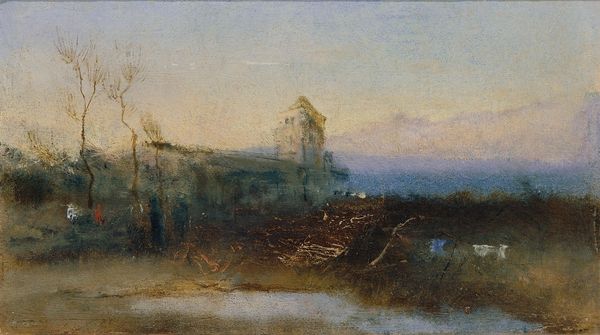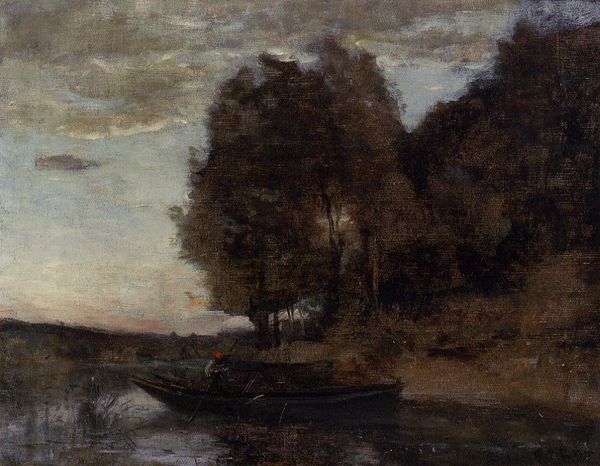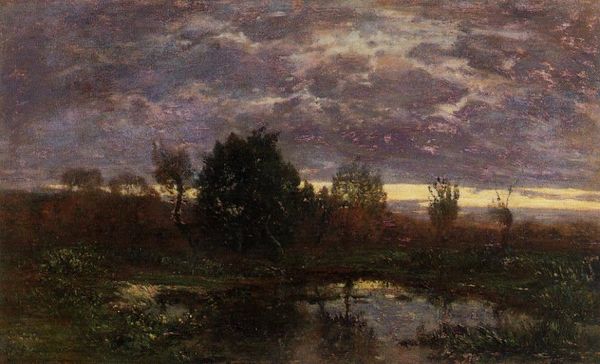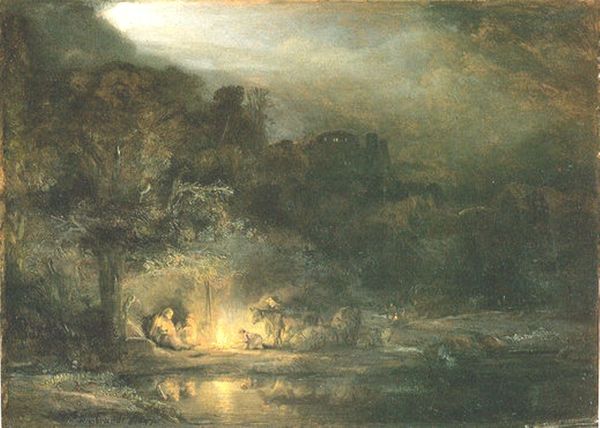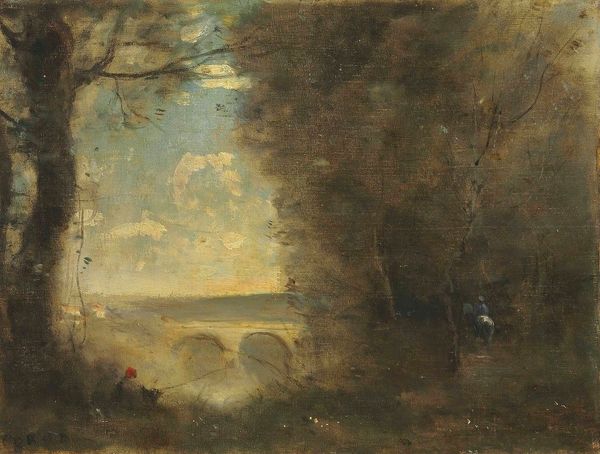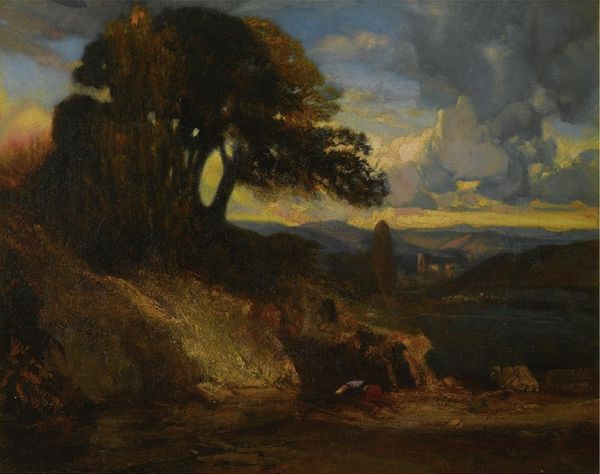
Copyright: Public domain
Editor: Here we have Gustave Moreau’s "The Death of Sappho," an oil painting from 1875. The somber, muted colors and the positioning of Sappho's body really create a feeling of irrevocable loss. What compositional elements strike you most forcefully? Curator: The work displays a dynamic tension between the earthbound form and the receding space. The jagged cliffs and architecture on the right function almost as a frame for Sappho's descent, contrasting starkly with the fluid horizon. It calls to mind the Apollonian versus the Dionysian. Notice also how Moreau articulates line in Sappho's drapery compared with how light bleeds through the setting sky: he has mastered techniques to differentiate meaning within his structural organisation. Editor: It seems the lone figure overlooking the horizon further emphasizes Sappho's isolation, perhaps even her rejection. Curator: Precisely. The figure on the promontory becomes a focal point in this visual arrangement. Consider also how the tonal values operate between Sappho's brightly coloured dress versus that lone observer on the cliff's edge; Moreau has constructed a dialectical tension through these very chromatic choices, pitting visibility against imperceptibility, perhaps mirroring themes of acceptance versus rejection that the tragic story alludes to. Do you discern in the figure's posture something revealing about their possible allegorical meaning? Editor: That's fascinating. I hadn't considered how carefully the visual structures were constructed. Looking closely, there's so much more than just the myth on display. Curator: Exactly. The enduring power of Moreau lies in the interplay of form, line, and color which work in tandem to convey enduring symbolic meanings and philosophical concepts. Editor: Thanks, this has made me consider the formal elements and structure much more closely and how they contribute to the symbolism of the painting.
Comments
No comments
Be the first to comment and join the conversation on the ultimate creative platform.
